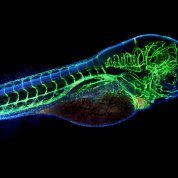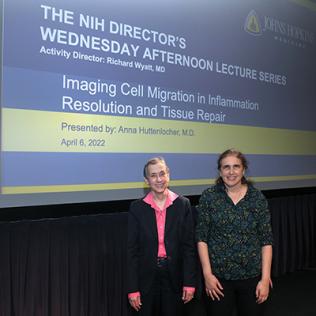
On the Cover
Zebrafish embryo. The blue areas are cell bodies, the green lines are blood vessels and the red glow is blood. The image was created by stitching together five individual images captured by a hyperspectral multipoint confocal fluorescence microscope that was developed at the Eliceiri Laboratory.
andreas velten, eliceiri Laboratory, University of Wisconsin-madison





